Five Spices Aroma Oil
A super versatile aroma oil with a Chinese-inspired fragrance. This makes a great chili oil, too!
If you’re not yet a subscriber and like The Ramen Bowl, leave your email to start receiving all the new posts directly in your inbox! 👇
Introduction
Five Spices is a traditional spice mix from Chinese cuisine, usually made of Sichuan peppers, cloves, star anise, Chinese cinnamon, and fennel seeds. Powdered five spices blends are easy to find in Asian shops and are the base for many Cantonese dishes.
For this recipe, though, I tend not to use a powder. Instead, the whole spices can be infused into the oil.
What does it taste like? The flavor is round and fragrant. The spiciness is at the same time sweet and savory. I love it for soups, while it also works pretty well for fried rice, sauté vegetables, and fried eggs. For many dishes, the five spices oil is a simple way of adding a complex but manageable aroma.
This is one of my “signature” aroma oils that, as you might have got already, I love throwing into various preparations, even outside of the Ramen world. Its versatility is unbelievable.
Also, you might have read my other Chinese-inspired Ajitama recipe post. If not, go take a look, as it pairs pretty well with this aroma oil!
If this were not enough, a bonus point is that this is also a tremendously simple recipe. Low effort for a great result, so let’s see how to make it.
Recipe
For this recipe, I will refer to a generic “oil” for the preparation.
Either pork lard or neutral vegetable oil, like the sunflower seeds one, can be used based on preference.
Using vegetable oil will produce a glossy result while using animal fat will render an opaque glaze. Animal fats also help with flavor, while I think the vegetable ones perform better in picking up flavors from the aromatics. You can even opt for half and half.
I often use vegetable oil, while today I used pork lard in the pictures, anyway our focus for this recipe will be on aromatics.
The choice in the end is totally up to you and might depend on the type of soup. If unsure, I suggest starting with a more manageable neutral vegetable oil.

Ingredients
125 g of oil
A bunch of scallion whites (or half a white onion)
2-3 peeled garlic cloves
Aromatics
5 g (or 1 tbsp) of whole Sichuan peppers
3 cloves
1 star anise
1 piece of cinnamon (more or less the same size as star anise)
2 g (or 1 tsp) fennel seeds
1 bay leaf
1 “coin” of fresh ginger
For converting in Chilli oil (optional)
4-6 Chinese chilis (without seeds, for milder heat)
1-2 tsp of Shichimi Togarashi
Preparation
For a twist of turning the result into a flavourful and fragrant chili oil, take a look at step 5.
Slightly toast the five spices (Sichuan peppers, cloves, star anise, cinnamon, fennel seeds) in a saucepan, then turn the heat off and allow it to cool.
In the meanwhile, cut scallions (or onion) and garlic into coarse pieces of more or less the same size.
Add the oil, onion, garlic, ginger, and bay leaf to the pan.
Cook on low heat, stirring occasionally, until everything gets a golden hue, around 10-15 minutes.
Optionally, right before turning the heat off on step 6, add the chili flakes and togarashi.
Remove the pan from the heat and allow for the content to steep and cool, around 15-30 minutes.
Strain the content and transfer it to a sealable container.
How to use it
Aroma Oil
When preparing your ramen, add the aroma oil with the tare at the bottom of your bowl. For a portion of 300 mL of soup, you can use between 15-30 mL of aroma oil (around 1-2 tbsp), depending on how you like it and how fatty your broth already is.
I usually prefer 15 mL of aroma oil for rich Paitan soups, while it can get nearer 30 mL for Chintans. Anyway, you can always add some oil on the top of the bowl too, if you feel it is needed.
Given its Chinese inspiration, the five spices aroma oil works particularly well for Chinese-inspired dishes. For example, the chili version is perfect on Tantanmen Ramen. Also, if made with vegetable oil, I find it to be great for Tonkotsu styles.
Onion and Garlic Chips
After cooking, you can get gorgeous onion and garlic chips to use in many ways. If you want to keep these, a suggestion is to use a tea infuser for holding the small aromatics (like pepper and fennel seeds). In this way, you prevent them from sticking with the onion and garlic, otherwise making it difficult to separate afterward.
Onion and garlic chips can add extra crunchiness as a topping, included with the tare at the bottom of the bowl, or even used outside of the ramen world. Think about a burger with these. I am craving it already.
Notes & Storage
Aroma oil can last up to 6 months in the fridge. Mind that if you worked with a solid oil like animal fat, it will harden, eventually getting back to solid.
I always try to keep a batch of this in my pantry, given how versatile this five spices aroma oil is, I use it so often that it never expires.
If you attempt to make it, let me know about the result and what you think about it!
— The Ramen Bowl - ◡ -
If you’re not yet a subscriber and like The Ramen Bowl, leave your email to start receiving all the new posts directly in your inbox! 👇




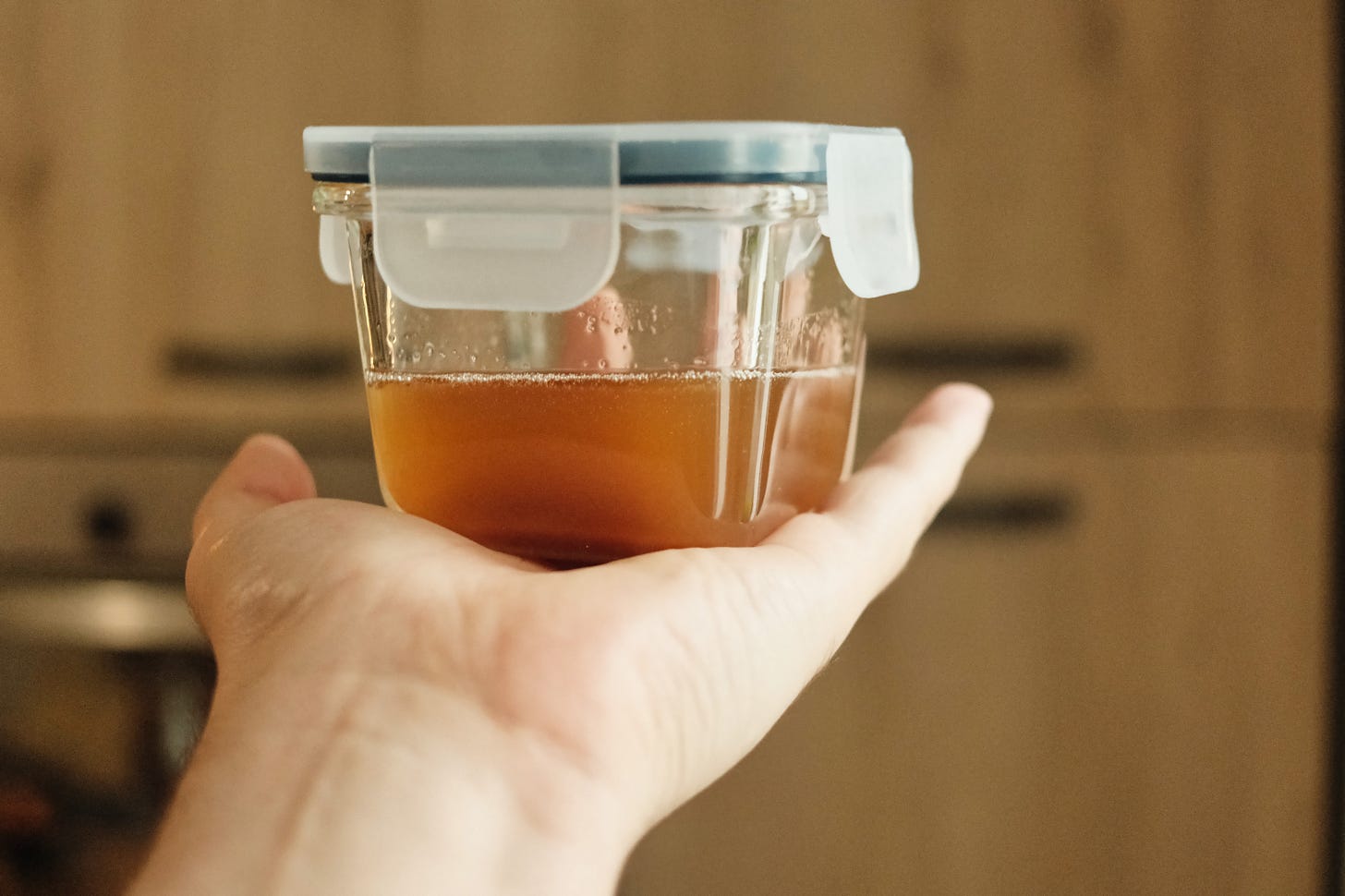
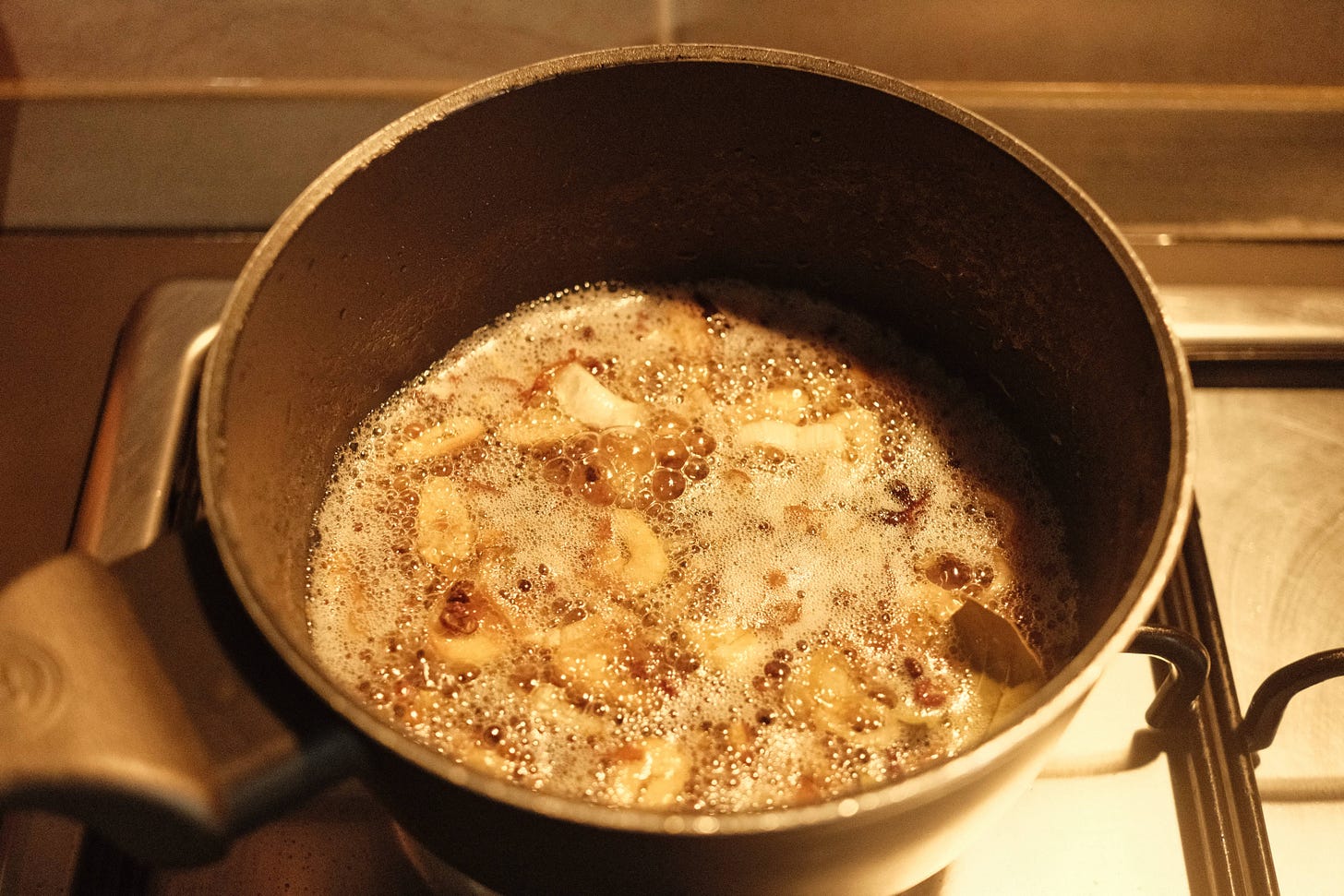
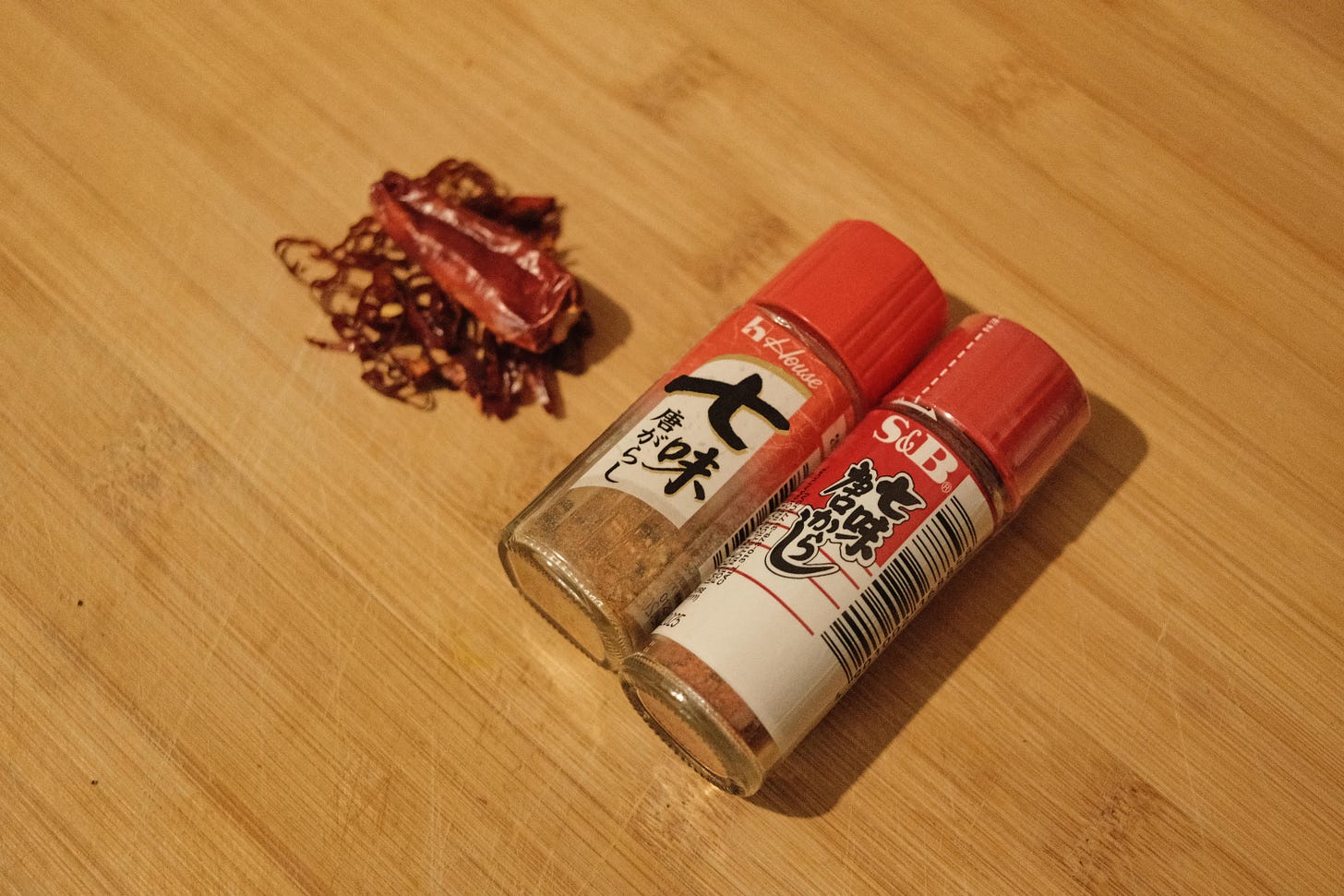
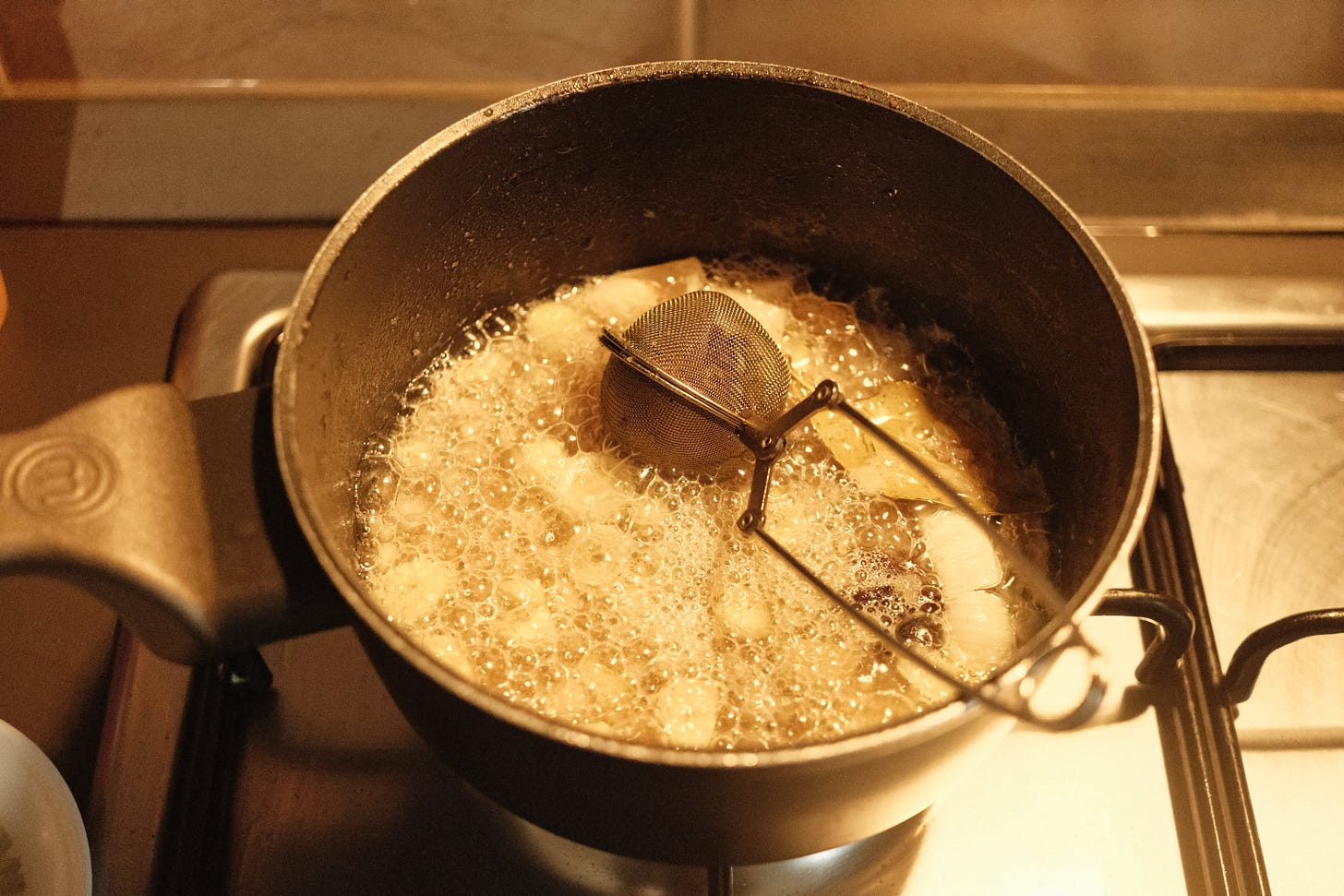
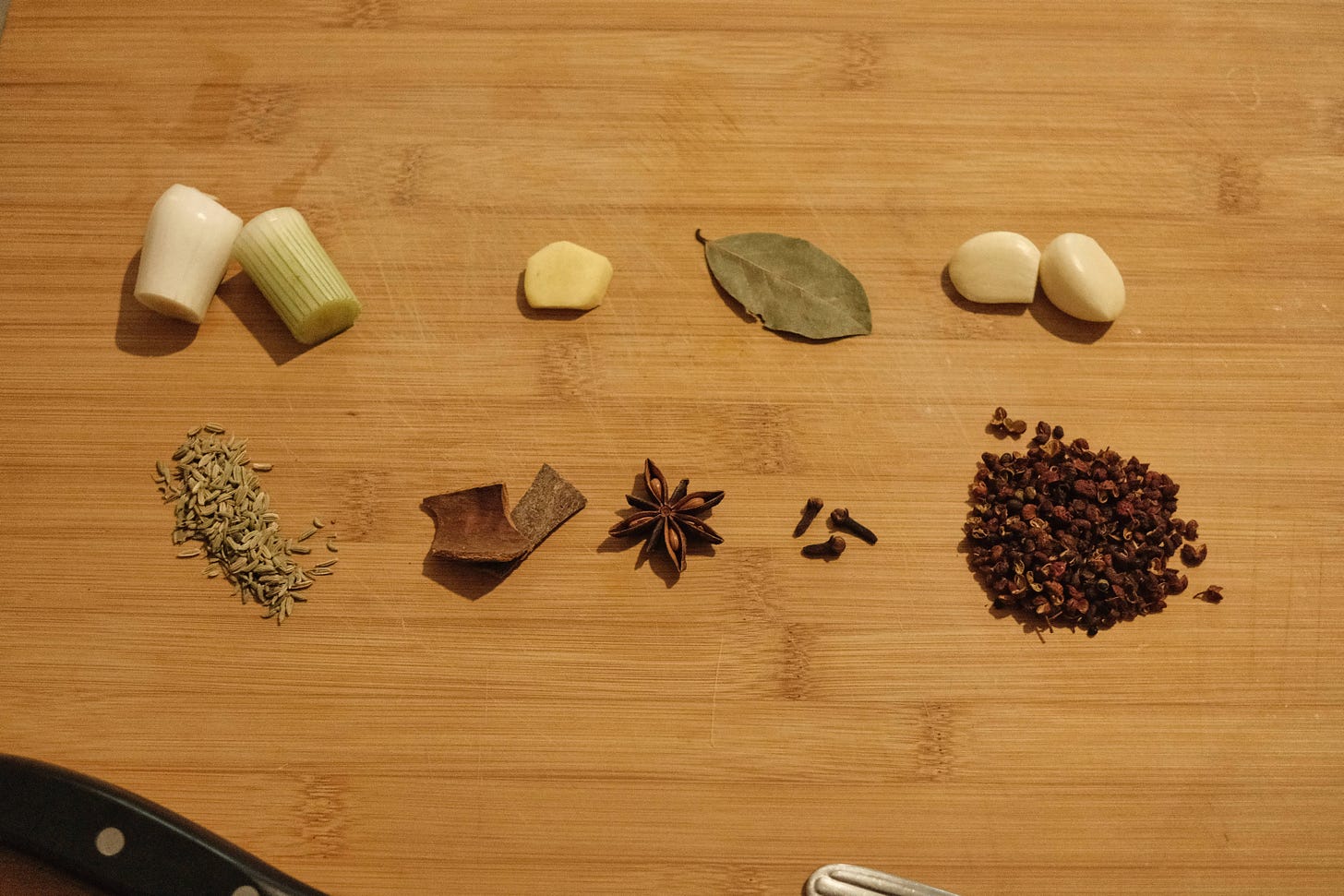
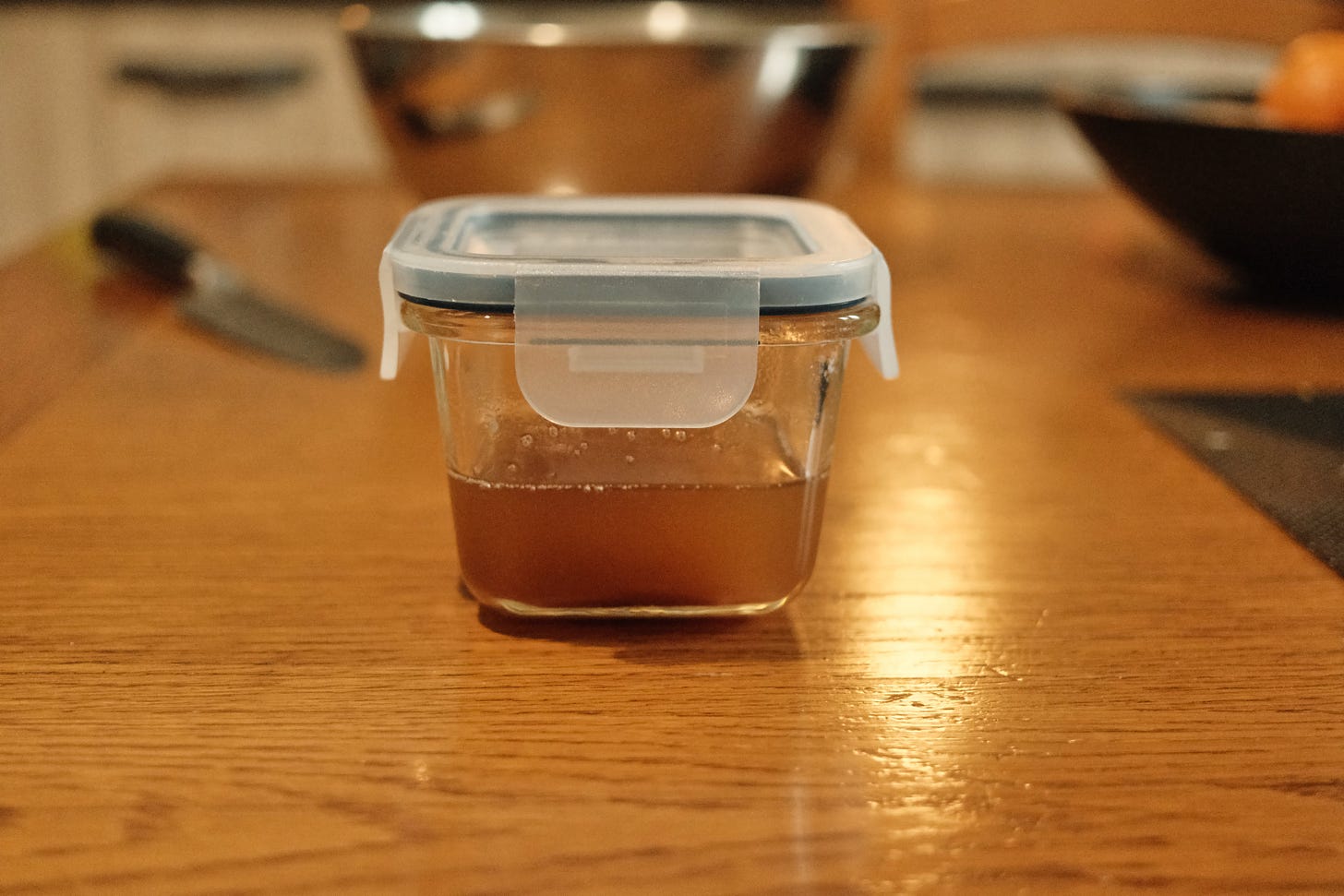
Thanks for reminding me what I can be doing with all those spices that are collecting dust on my spice rack!! Wonderful combo of flavours! :)
You have certainly provided a meal for the taste senses this week. I have all the ingredients in my pantry for the oil so will give it a try, and will definitely try the Asian version of “spaghetti bolognaise”